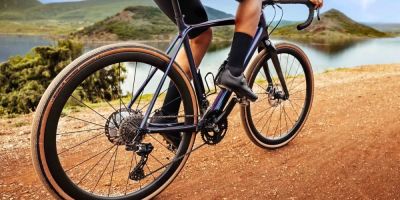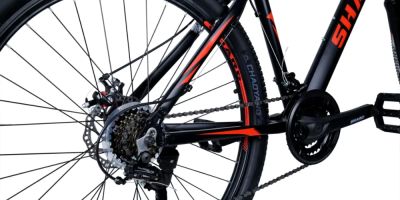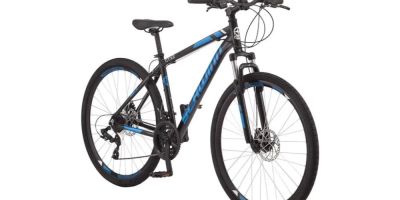Mastering the Art of Riding Mountain Bikes on Sandy Terrain
Mountain biking is one of my favorite outdoor activities, and over the years, I’ve found myself seeking out new challenges to push my limits. One of the most exhilarating (yet tricky) terrains to ride on is sand. I’ll never forget the first time I tried riding a mountain bike on sandy terrain. It was a beautiful day at a desert trail, and while the idea of biking on soft, sandy paths seemed like an exciting adventure, it quickly turned into a test of my bike handling skills. After several falls and a few hours of struggling, I knew I needed to learn some tricks to make my rides smoother and more efficient. Now, after plenty of practice, I’m here to share some essential tips and techniques on how to ride mountain bikes on sandy terrain, ensuring that your experience is as enjoyable as it is challenging.
1. Understanding the Challenges of Sandy Terrain
Sandy terrain presents a unique set of challenges for mountain bikers. Unlike harder surfaces, sand tends to make your bike tires sink in, which leads to more resistance and can make it difficult to maintain speed. I’ve learned that even experienced bikers need to adjust their technique when riding on sand, as the terrain is soft and often unpredictable. From loose sand to harder, packed trails, it’s important to understand the different types of sand you might encounter. For instance, fine, powdery sand is much harder to ride through compared to more compact, coarse sand. The goal is to avoid spinning out or sinking too deep, both of which can easily lead to a stop.
When I first started, I struggled with finding the right balance between maintaining momentum and staying steady on my bike. The more I practiced, the more I realized that each sandy ride was like learning a new skill—one that requires patience, focus, and the right approach.
2. Choosing the Right Gear for Sandy Rides
The right gear makes a huge difference when riding on sandy terrain, and over time, I discovered that specific equipment could help me tackle the soft surface more effectively. One of the most important things to consider is the type of bike and tire setup you have.
2.1 Bike Tires: Go Wide or Go Home
In my experience, having the right tire width is critical when riding on sand. I initially tried using standard mountain bike tires, but they were too narrow and often got bogged down in the sand. After switching to wider tires, everything changed. Wide tires offer better floatation, allowing you to ride on top of the sand instead of sinking into it. Fat bike tires, which are much wider than traditional mountain bike tires, are particularly well-suited for sandy terrain. The extra width helps disperse the weight of the bike, providing more traction and control over loose surfaces.
2.2 Lowering Tire Pressure
Another tip that made a significant difference was adjusting my tire pressure. I had heard that lowering the pressure could help in sandy conditions, but I was skeptical at first. After some trial and error, I found that reducing my tire pressure (by about 10-15 psi) made a noticeable improvement. The lower pressure allows the tire to conform to the uneven surface of the sand, increasing traction and preventing the bike from sinking too deeply. However, it’s important to avoid over-inflating or under-inflating, as either can negatively affect your ride.
3. Technique: How to Ride Through Sand Like a Pro
Riding in sand requires a shift in technique compared to riding on more solid surfaces. I’ve learned that mastering these techniques is key to navigating sandy terrain effectively. Here are some of the most important skills and strategies that helped me improve my sandy rides:
3.1 Keep Your Momentum
One of the biggest mistakes I made when I first started riding on sand was trying to slow down to avoid sinking. I quickly learned that keeping momentum is crucial. Sand slows you down quickly, and if you let your speed drop too much, it becomes harder to stay afloat. I found that maintaining a steady pace, without over-pedaling, helps me glide over soft patches without losing my balance or sinking into the sand. While it may feel counterintuitive, letting the bike flow with the terrain rather than fighting it has made my rides much more enjoyable.
3.2 Stand Up and Keep Your Weight Centered
Another tip that transformed my riding was learning how to position my body. When riding on sandy paths, I found that standing up slightly off the saddle and keeping my weight centered over the bike was essential for balance. By lifting myself out of the saddle, I gave my bike more freedom to move through the sand while keeping my balance steady. Additionally, I learned that shifting my body slightly back (without overdoing it) helps keep the front wheel from digging into the sand. This body position allows for better control, especially when tackling deeper sand.
3.3 Avoid Steering Too Much
When I first tried riding through sand, I noticed that my bike seemed to swerve uncontrollably. I soon realized that oversteering was making the situation worse. Instead, I focused on keeping my hands relaxed on the handlebars and steering with more subtle movements. I learned that too much turning can make the bike unstable, especially in loose sand. Instead, I allow the bike to glide through the sand with minimal adjustments to the handlebars. By trusting the bike to follow the terrain naturally, I felt much more in control.
4. Additional Tips for Riding on Sandy Terrain
Here are a few more tips that helped me make the most of my rides through sandy terrain:
4.1 Choose the Right Time to Ride
Riding in sand is challenging, but timing can make a big difference. I’ve found that riding early in the morning or after a cool rain makes the sand more compact and easier to ride on. Sand that has been warmed by the sun can become too soft and tricky to navigate, so planning your rides around cooler parts of the day has helped me maintain better traction.
4.2 Know Your Limits
As much as I love a good challenge, I’ve also learned to know my limits when it comes to sandy terrain. Some trails can be incredibly difficult, and it’s okay to take breaks and reassess if I feel like I’m struggling. Riding in deep sand requires patience and endurance, so it’s important to listen to your body and take your time when necessary. There’s no rush—enjoy the ride!
5. Where to Find the Best Sandy Terrain for Mountain Biking
After improving my skills, I’ve ventured to some incredible spots that are perfect for testing your abilities on sandy terrain. Here are a few of my favorites:
5.1 Sand Dunes in California
The California sand dunes are a fantastic place to ride mountain bikes on soft terrain. From the Imperial Sand Dunes to the dunes near Death Valley, these locations offer miles of sandy paths perfect for biking. The landscape is stunning, and the variety of terrain gives bikers a chance to test their skills on everything from soft sand to firmer paths.
5.2 The Desert Trails in Arizona
Arizona’s desert trails are another great destination for mountain biking on sandy terrain. Areas like the Sonoran Desert offer riders a mix of compact and loose sand, allowing for plenty of opportunities to improve sand-riding skills. The desert’s natural beauty adds to the overall experience, making it a great place for adventure seekers like me.
SEO Title: Master Mountain Biking on Sandy Terrain: Essential Tips and Techniques
SEO Keywords: mountain biking on sandy terrain, riding on sand, sandy terrain biking tips, best bike tires for sand, mountain biking skills for sand, desert biking tips, riding through soft sand, bike riding techniques
SEO Description: Learn how to ride mountain bikes on sandy terrain with these expert tips. Discover techniques, gear recommendations, and top locations for biking on sand.










